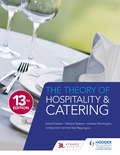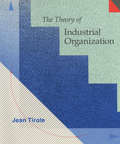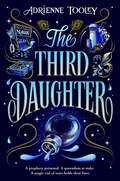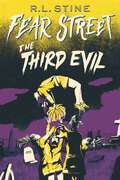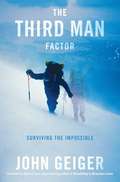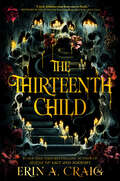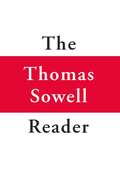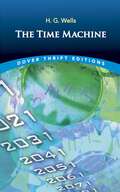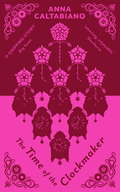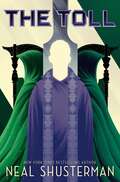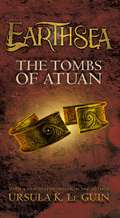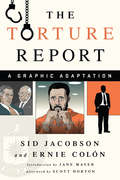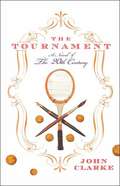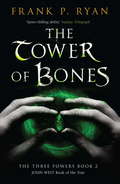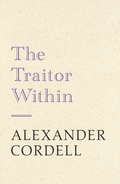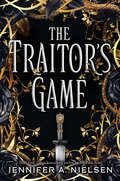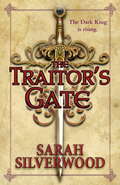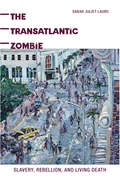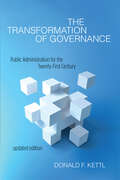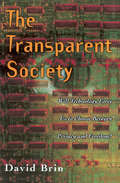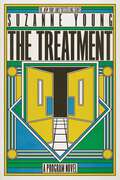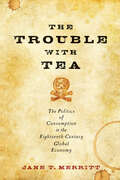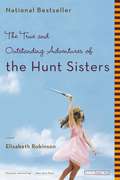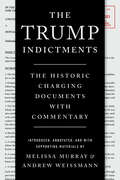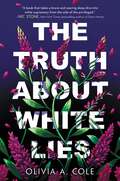- Table View
- List View
The Theory of Hospitality and Catering Thirteenth Edition
by David Foskett Patricia Paskins Andrew PenningtonOffering a complete overview of the hospitality and catering industry for over 50 years, this new edition of the essential reference text has been updated to reflect latest developments and current issues.Covering all aspects of the industry - from commodities and nutrition, to planning, resourcing and running each of the key operational areas - The Theory of Hospitality and Catering is an essential text for anyone training to work in the hospitality industry. It will be valuable to anyone completing courses in Professional Cookery and Hospitality Supervision, as well as foundation degree and first-year undergraduate hospitality management and culinary arts students.- Discusses all of the current issues affecting the industry, including environmental concerns such as traceability, seasonality and sustainability; as well as important financial considerations such as how to maximise profit and reduce food waste.- Considers latest trends and developments, including the use and impact of social media.- Updated to reflect up-to-date legislative requirements, including new allergen legislation.- Helps you to understand how theories are applied in practice with new case studies from hospitality businesses throughout.
The Theory of Industrial Organization (Wolls Lehr- Und Handbücher Der Wirtschafts- Und Sozialwissenschaften Ser.)
by Jean TiroleThe Theory of Industrial Organization is the first primary text to treat the new industrial organization at the advanced-undergraduate and graduate level. Rigorously analytical and filled with exercises coded to indicate level of difficulty, it provides a unified and modern treatment of the field with accessible models that are simplified to highlight robust economic ideas while working at an intuitive level. To aid students at different levels, each chapter is divided into a main text and supplementary section containing more advanced material. Each chapter opens with elementary models and builds on this base to incorporate current research in a coherent synthesis. Tirole begins with a background discussion of the theory of the firm.In Part I he develops the modern theory of monopoly, addressing single product and multi product pricing, static and intertemporal price discrimination, quality choice, reputation, and vertical restraints. In Part II, Tirole takes up strategic interaction between firms, starting with a novel treatment of the Bertrand-Cournot interdependent pricing problem. He studies how capacity constraints, repeated interaction, product positioning, advertising, and asymmetric information affect competition or tacit collusion. He then develops topics having to do with long term competition, including barriers to entry, contestability, exit, and research and development. He concludes with a "game theory user's manual" and a section of review exercises.Important Notice: The digital edition of this book is missing some of the images found in the physical edition.
The Third Daughter (Betrayal Prophecies #1)
by Adrienne TooleyAn "immersive and intense" (SLJ) fantasy about legacy, betrayal, sisterhood, and politicizing emotion in the quest for power—all while a slow-burn LGBTQ romance simmers. For centuries, the citizens of Velle have waited for their New Maiden to return. The prophecy states she will appear as the third daughter of a third daughter. When the fabled child is finally born to Velle&’s reigning queen all rejoice except for Elodie, the queen&’s eldest child, who has lost her claim to the crown. The only way for Elodie to protect Velle is to retake the throne. To do so, she must debilitate the Third Daughter—her youngest sister, Brianne. Desperate, Elodie purchases a sleeping potion from Sabine, who sells sadness. But the apothecary mistakenly sends the princess away with a vial of tears instead of a harmless sleeping brew. Sabine&’s sadness is dangerously powerful, and Brianne slips into a slumber from which she will not wake. With the fates of their families and country hanging in the balance, Sabine and Elodie hurry to revive the Third Daughter while a slow-burning attraction between the two girls erupts in full force.The Third Daughter is a must-read for fans of: BookTok Romantasy Red Queen by Victoria Aveyard These Violent Delights by Chloe Gong Slow Burn Romance / One Bed
The Third Evil: The First Evil; The Second Evil; The Third Evil (Fear Street #3)
by R.L. StineTormented by dreams of her dead sister, Bobbi, and by a series of gruesome events, Corky knows that it is up to her to learn the century-old secret that is tearing her world apart.
The Third Man Factor
by John GeigerThe Third Man Factor is an extraordinary account of how people at the very edge of death often sense an unseen presence beside them who encourages them to make one final effort to survive. This incorporeal being offers a feeling of hope, protection, and guidance, and leaves the person convinced he or she is not alone. There is a name for this phenomenon: it's called the Third Man Factor.If only a handful of people had ever encountered the Third Man, it might be dismissed as an unusual delusion shared by a few overstressed minds. But over the years, the experience has occurred again and again, to 9/11 survivors, mountaineers, divers, polar explorers, prisoners of war, sailors, shipwreck survivors, aviators, and astronauts. All have escaped traumatic events only to tell strikingly similar stories of having sensed the close presence of a helper or guardian. The force has been explained as everything from hallucination to divine intervention. Recent neurological research suggests something else.Bestselling and award-winning author John Geiger has completed six years of physiological, psychological, and historical research on the Third Man. He blends his analysis with compelling human stories such as that of Ron DiFrancesco, the last survivor to escape the World Trade Center on 9/11; Ernest Shackleton, the legendary explorer whose account of the Third Man inspired T. S. Eliot to write of it in The Waste Land; Jerry Linenger, a NASA astronaut who experienced the Third Man while aboard the Mir space station-and many more.Fascinating for any reader, The Third Man Factor at last explains this secret to survival, a Third Man who-in the words of famed climber Reinhold Messner-"leads you out of the impossible."
The Thirteenth Child
by Erin A. CraigAll gifts come with a price. <P><P> Hazel Trépas has always known she wasn’t like the rest of her siblings. A thirteenth child, promised away to one of the gods, she spends her childhood waiting for her godfather—Merrick, the Dreaded End—to arrive. <P><P> When he does, he lays out exactly how he’s planned Hazel’s future. She will become a great healer, known throughout the kingdom for her precision and skill. To aid her endeavors, Merrick blesses Hazel with a gift, the ability to instantly deduce the exact cure needed to treat the sick. <P><P> But all gifts come with a price. Hazel can see when Death has claimed a patient—when all hope is gone—and is tasked to end their suffering, permanently. Haunted by the ghosts of those she’s killed, Hazel longs to run. But destiny brings her to the royal court, where she meets Leo, a rakish prince with a disdain for everything and everyone. And it’s where Hazel faces her biggest dilemma yet—to save the life of a king marked to die. Hazel knows what she is meant to do and knows what her heart is urging her toward, but what will happen if she goes against the will of Death? <P><P> From the astonishing mind of Erin A. Craig comes the breathtaking fairy tale retelling readers have been waiting for— what does a life well-lived mean, and how do we justify the impossible choices we make for the ones we love? The Thirteenth Child is a must-read for fans of dark fairy tales, romantasy, and epic fantasy alike. <p> <b>New York Times Bestseller</b>
The Thomas Sowell Reader
by Thomas SowellThese selections from the many writings of Thomas Sowell over a period of a half century cover social, economic, cultural, legal, educational, and political issues. The sources range from Dr. Sowell's letters, books, newspaper columns, and articles in both scholarly journals and popular magazines. The topics range from late-talking children to "tax cuts for the rich," baseball, race, war, the role of judges, medical care, and the rhetoric of politicians. These topics are dealt with by sometimes drawing on history, sometimes drawing on economics, and sometimes drawing on a sense of humor.
The Time Machine (Dover Thrift Editions: Classic Novels)
by H. G. WellsEnglish novelist, historian and science writer Herbert George Wells (1866–1946) abandoned teaching and launched his literary career with a series of highly successful science-fiction novels. The Time Machine was the first of a number of these imaginative literary inventions. First published in 1895, the novel follows the adventures of a hypothetical Time Traveller who journeys into the future to find that humanity has evolved into two races: the peaceful Eloi — vegetarians who tire easily — and the carnivorous, predatory Morlocks.After narrowly escaping from the Morlocks, the Time Traveller undertakes another journey even further into the future where he finds the earth growing bitterly cold as the heat and energy of the sun wane. Horrified, he returns to the present, but soon departs again on his final journey.While the novel is underpinned with both Darwinian and Marxist theory and offers fascinating food for thought about the world of the future, it also succeeds as an exciting blend of adventure and pseudo-scientific romance. Sure to delight lovers of the fantastic and bizarre, The Time Machine is a book that belongs on the shelf of every science-fiction fan.
The Time of the Clockmaker (Seventh Miss Hatfield Ser. #2)
by Anna CaltabianoHer mentor shockingly killed in front of her, Rebecca Hatfield must flee the place and time she knows. She has lost her family, her dearest love and her ability to live a normal life. All she has left is the gift - or curse - of her immortality, and the bizarre clock that allows her to travel in time.But when she too is attacked by the mysterious black-clad figure, Rebecca finds herself stranded in Tudor England. The clock has been stolen and without it, she can never leave the past. Alone, without friends or resources, she must risk the danger of Henry VIII's court and hunt down her attacker.But someone else is waiting for her...
The Toll: Scythe; Thunderhead; The Toll (Arc of a Scythe #3)
by Neal ShustermanIn the highly anticipated finale to the New York Times bestselling trilogy, dictators, prophets, and tensions rise. In a world that&’s conquered death, will humanity finally be torn asunder by the immortal beings it created?Citra and Rowan have disappeared. Endura is gone. It seems like nothing stands between Scythe Goddard and absolute dominion over the world scythedom. With the silence of the Thunderhead and the reverberations of the Great Resonance still shaking the earth to its core, the question remains: Is there anyone left who can stop him? The answer lies in the Tone, the Toll, and the Thunder.
The Tombs of Atuan (Earthsea Cycle #2)
by Ursula K. Le GuinOne of the Time 100 Best Fantasy Books Of All Time The Newbery Honor–winning second novel in the renowned Earthsea series from Ursula K. LeGuin.In this second novel in the Earthsea series, Tenar is chosen as high priestess to the ancient and nameless Powers of the Earth, and everything is taken from her—home, family, possessions, even her name. She is now known only as Arha, the Eaten One, and guards the shadowy, labyrinthine Tombs of Atuan. Then a wizard, Ged Sparrowhawk, comes to steal the Tombs’ greatest hidden treasure, the Ring of Erreth-Akbe. Tenar’s duty is to protect the Ring, but Ged possesses the light of magic and tales of a world that Tenar has never known. Will Tenar risk everything to escape from the darkness that has become her domain? With millions of copies sold worldwide, Ursula K. Le Guin’s Earthsea Cycle has earned a treasured place on the shelves of fantasy lovers everywhere, alongside the works of such beloved authors as J.R.R. Tolkien and C.S. Lewis.
The Torture Report: A Graphic Adaptation
by Jane Mayer Sid Jacobson Scott Horton"The more who learn the truth the better off the country will be, because there is no better safeguard against the revival of torture than a well-informed public." --Jane Mayer, from the IntroductionOn December 9, 2014, the Senate Select Committee on Intelligence released a report that strongly condemned the CIA for its secret and brutal use of torture in the treatment of prisoners captured in the "war on terror" during the George W. Bush administration. This deeply researched and fully documented investigation caused monumental controversy, interest, and concern, and starkly highlighted both how ineffective the program was as well as the lengths to which the CIA had gone to conceal it.In The Torture Report, Sid Jacobson and Ernie Colón use their celebrated graphic-storytelling abilities to make the damning torture report accessible, finally allowing Americans to lift the veil and fully understand the crimes committed by the CIA.
The Tournament: A Novel of the 20th Century (Text Classics Ser.)
by John ClarkeA novel of the 20th century in which the greatest thinkers and personalities engage in a two-week tennis tournament."If you didn't know better you'd think this city had gone crazy. The streets of Paris are full of celebrities and media, and out at the stadium the crowds are already huge as players pound the practice courts in preparation for the greatest tournament of the modern era. At the airport, where they've opened three more runways and put on extra staff, players and officials have been arriving like migrating birds. From all corners they've come, the stars of the modern game. What a line-up!" --from The TournamentThe most unusual tennis tournament in history is about to start. Albert Einstein is seeded fourth, Chaplin, Freud, and van Gogh are in the top rankings, and seeded first is Tony Chekhov. In all, 128 players--everyone from Louis Armstrong to George Orwell, Gertrude Stein to Coco Chanel--are going to fight it out until the exhilarating final match on center court.The Tournament is a funny, strange, and beguiling book in which, game by game and match by match, the world's most creative thinkers put their tennis skills to the ultimate test. And if you read carefully, you'll be set for life--having learned the cultural history of the 20th century!
The Tower of Bones: The Three Powers Book 2
by Frank P. RyanFour young people have slipped from our world into the enchanted land of Tír in this 'epic adventure that just does not stop!' (Glenda A. Bixler on Authorsden), where they must face a malicious demigod and an evil witch. Alan, Kate, Mark and Mo could be an enormous force for good in this beautiful but war-torn, deeply oppressed world - but one of their number has been kidnapped and one lost, and one is changing almost beyond recognition. It's up to Alan to reunite them and restore their strength - but the Great Witch Olc, scheming in her Tower of Bones, has resurrected the malicious demigod Fangorath to use for her own evil ends, and she is planning to lure Alan into a trap.Millions are depending on them, but they're not just fighting for one world any more . . .
The Traitor Within
by Alexander CordellA fourteen-year-old Chinese boy struggles to prove his loyalty and courage to his commune and country in the face of his fear of a predicted attack on his village by the Taiwanese enemy.
The Traitor's Game: The Traitor's Game (The Traitor's Game #1)
by Jennifer A. NielsenHearts and loyalties collide in this electrifying new YA series from New York Times bestselling author Jennifer A. Nielsen.Jennifer A. Nielsen's New York Times bestseller The Traitor's Game, which Entertainment Weekly called "the next big YA fantasy," is perfect for fans of the Red Queen series by Victoria Aveyard and the Throne of Glass series by Sarah J. Maas. Kestra Dallisor has spent three years in exile in the Lava Fields, but that won't stop her from being drawn back into her father's palace politics. He's second-in-command to the cruel king, Lord Endrick, which makes Kestra a valuable bargaining chip. A group of rebels knows this -- and they snatch Kestra from her carriage as she reluctantly travels home.The kidnappers want her to retrieve the lost Olden Blade, the only object that can destroy the king, but Kestra is not the obedient captive they expected. One of the rebels, Simon, has his hands full as Kestra tries to foil their plot, by any means necessary. As motives shift and secrets emerge, both have to decide what -- and who -- it is they're fighting for.
The Traitor's Gate: The Nowhere Chronicles Book Two
by Sarah SilverwoodIt's Christmas-time, and Finmere Tingewick Smith (Fin to his friends) is back in Orrery House, with Christopher, one of his two best friends. They're there for the Initiation of the new Knights of Nowhere. The boys have tried to find some normalcy after their recent adventures, but they're badly missing Joe. He's stuck in the Nowhere, guarding two of the Five Eternal Stories that weave all the worlds together; they're held inside his own body. In the Somewhere, Christmas is a time of glad tidings and gifts and goodwill, Christmas trees, carols and the celebration of good things. But there is no Christmas in the Nowhere, and in both worlds, things are not as settled as they look, for Justin Arnold-Mather is getting ready to make his move. In the Nowhere, something is moving through the streets, attacking people - random victims - and leaving them mad and disfigured. And in Orrery House, a tiny crack has appeared in the Prophecy table.The Prophecy is coming alive. The battle lines will be drawn between even the closest of friends, for the fight is on. The Dark King is rising.
The Transatlantic Zombie: Slavery, Rebellion, and Living Death
by Sarah J. LauroOur most modern monster and perhaps our most American, the zombie that is so prevalent in popular culture today has its roots in African soul capture mythologies. The Transatlantic Zombie provides a more complete history of the zombie than has ever been told, explaining how the myth's migration to the New World was facilitated by the transatlantic slave trade, and reveals the real-world import of storytelling, reminding us of the power of myths and mythmaking, and the high stakes of appropriation and homage. Beginning with an account of a probable ancestor of the zombie found in the Kongolese and Angolan regions of seventeenth-century Africa and ending with a description of the way, in contemporary culture, new media are used to facilitate zombie-themed events, Sarah Juliet Lauro plots the zombie's cultural significance through Caribbean literature, Haitian folklore, and American literature, film, and the visual arts. The zombie entered US consciousness through the American occupation of Haiti, the site of an eighteenth-century slave rebellion that became a war for independence, thus making the figuration of living death inseparable from its resonances with both slavery and rebellion. Lauro bridges African mythology and US mainstream culture by articulating the ethical complications of the zombie's invocation as a cultural conquest that was rebranded for the American cinema. As The Transatlantic Zombie shows, the zombie is not merely a bogeyman representing the ills of modern society, but a battleground over which a cultural war has been fought between the imperial urge to absorb exotic, threatening elements, and the originary, Afro-disaporic culture's preservation through a strategy of mythic combat.
The Transformation of Governance: Public Administration for the Twenty-First Century (Interpreting American Politics)
by Donald F. KettlAn updated edition of the classic text on public administration presents practical steps for managing government effectively in an age of hyperpartisanship.Co-winner of the Louis Brownlow Book Award from the National Academy of Public AdministrationThe traditional theory of public administration is based on entrenched notions of hierarchy and authority. However, as the structure of public work has grown less hierarchical, managers have adopted a wide variety of non-authoritarian strategies. This growing gap between theoretical ideas and actual practice poses enormous challenges for front-line leaders struggling to deal with ever-larger expectations and ever-tighter budgets—and for American government in determining how best to hold public administrators accountable for their performance.The Transformation of Governance offers a new framework for reconciling effective administration with the requirements of democratic government. Instead of thinking in terms of organizational structure and management, Donald F. Kettl suggests, administrators and theorists need to focus on governance, or the links between government and its broader environment—political, social, and administrative—through which social action occurs.In this updated edition, a new epilogue shows Kettl urging political leaders to step back from the political barricades of hyperpartisanship to consider government’s contemporary dilemma: Is there any practical way forward for public administrators to manage government effectively? Reinforcing the ten principles of bridge building which he developed in the original book, Kettl adds an eleventh, which lays out five transformative strategies: redefining public law to promote public accountability; re-conceptualizing government agencies as instruments of leverage; launching government leaders as boundary spanners; using information technology for building authority and trust; and incorporating performance management into processes that drive collaboration.With a new preface from Michael Nelson, editor of the Interpreting American Politics series, this award-winning book will be sought out by public policymakers eager to read a leading scholar's newest insights into the field.
The Transparent Society: Will Technology Force Us To Choose Between Privacy And Freedom?
by David BrinIn New York and Baltimore, police cameras scan public areas twenty-four hours a day. Huge commercial databases track you finances and sell that information to anyone willing to pay. Host sites on the World Wide Web record every page you view, and "smart" toll roads know where you drive. Every day, new technology nibbles at our privacy.Does that make you nervous? David Brin is worried, but not just about privacy. He fears that society will overreact to these technologies by restricting the flow of information, frantically enforcing a reign of secrecy. Such measures, he warns, won't really preserve our privacy. Governments, the wealthy, criminals, and the techno-elite will still find ways to watch us. But we'll have fewer ways to watch them. We'll lose the key to a free society: accountability.The Transparent Society is a call for "reciprocal transparency." If police cameras watch us, shouldn't we be able to watch police stations? If credit bureaus sell our data, shouldn't we know who buys it? Rather than cling to an illusion of anonymity-a historical anomaly, given our origins in close-knit villages-we should focus on guarding the most important forms of privacy and preserving mutual accountability. The biggest threat to our freedom, Brin warns, is that surveillance technology will be used by too few people, now by too many.A society of glass houses may seem too fragile. Fearing technology-aided crime, governments seek to restrict online anonymity; fearing technology-aided tyranny, citizens call for encrypting all data. Brins shows how, contrary to both approaches, windows offer us much better protection than walls; after all, the strongest deterrent against snooping has always been the fear of being spotted. Furthermore, Brin argues, Western culture now encourages eccentricity-we're programmed to rebel! That gives our society a natural protection against error and wrong-doing, like a body's immune system. But "social T-cells" need openness to spot trouble and get the word out. The Transparent Society is full of such provocative and far-reaching analysis.The inescapable rush of technology is forcing us to make new choices about how we want to live. This daring book reminds us that an open society is more robust and flexible than one where secrecy reigns. In an era of gnat-sized cameras, universal databases, and clothes-penetrating radar, it will be more vital than ever for us to be able to watch the watchers. With reciprocal transparency we can detect dangers early and expose wrong-doers. We can gauge the credibility of pundits and politicians. We can share technological advances and news. But all of these benefits depend on the free, two-way flow of information.
The Treatment: The Program; The Treatment; The Remedy; The Epidemic; The Adjustment; The Complication (Program #2)
by Suzanne YoungCan Sloane and James survive the lies and secrets surrounding them, or will The Program claim them in the end? Find out in this &“chilling and suspenseful&” (Publishers Weekly) second book in Suzanne Young&’s New York Times bestselling Program series—now with a freshly reimagined look.How do you stop an epidemic? Sloane and James are on the run after barely surviving the suicide epidemic and The Program. But they&’re not out of danger. Huge pieces of their memories are still missing, and although Sloane and James have found their way back to each other, The Program isn&’t ready to let them go. Escaping with a group of troubled rebels, Sloane and James will have to figure out who they can trust, and how to take down The Program. The key may be in their hazy past, and to unlock it, they need the Treatment—a pill that can bring back forgotten memories, but at a high cost. And there&’s only one dose.
The Trouble with Tea: The Politics of Consumption in the Eighteenth-Century Global Economy (Studies in Early American Economy and Society from the Library Company of Philadelphia)
by Jane T. MerrittHow tea’s political meaning shaped the culture and economy of the Anglo-American world.Americans imagined tea as central to their revolution. After years of colonial boycotts against the commodity, the Sons of Liberty kindled the fire of independence when they dumped tea in the Boston harbor in 1773. To reject tea as a consumer item and symbol of "taxation without representation" was to reject Great Britain as master of the American economy and government. But tea played a longer and far more complicated role in American economic history than the events at Boston suggest.In The Trouble with Tea, historian Jane T. Merritt explores tea as a central component of eighteenth-century global trade and probes its connections to the politics of consumption. Arguing that tea caused trouble over the course of the eighteenth century in a number of different ways, Merritt traces the multifaceted impact of that luxury item on British imperial policy, colonial politics, and the financial structure of merchant companies. Merritt challenges the assumption among economic historians that consumer demand drove merchants to provide an ever-increasing supply of goods, thus sparking a consumer revolution in the early eighteenth century.The Trouble with Tea reveals a surprising truth: that concerns about the British political economy, coupled with the corporate machinations of the East India Company, brought an abundance of tea to Britain, causing the company to target North America as a potential market for surplus tea. American consumers only slowly habituated themselves to the beverage, aided by clever marketing and the availability of Caribbean sugar. Indeed, the "revolution" in consumer activity that followed came not from a proliferation of goods, but because the meaning of these goods changed. By the 1750s, British subjects at home and in America increasingly purchased and consumed tea on a daily basis; once thought a luxury, tea had become a necessity. This fascinating look at the unpredictable path of a single commodity will change the way readers look at both tea and the emergence of America.
The True And Outstanding Adventures of the Hunt Sisters: A Novel
by Elisabeth RobinsonOlivia Hunt's Hollywood life has come to a grinding halt. A hotshot producer accustomed to first-class amenities, Olivia has just been unceremoniously fired after her last movie tanked. Her boyfriend, Michael, has dumped her. And she's not the blonde she used to be: dark roots are coming in at an alarming rate. Her next project is a well-crafted suicide note. Then she finds out what real trouble is. Olivia's beloved sister, Maddie, is seriously ill. Maddie is living the life Olivia ran like hell from - she's happily married to her high school sweetheart and still living in the small town where they grew up. Stunned and bewildered, Olivia catches the next plane back home. Maddie's idealism and optimism have always driven Olivia crazy. Even now, when the odds aren't good, Maddie never doubts she'll beat them. But Olivia wonders, is hope just a way of kidding yourself? As if to answer that question, Maddie challenges Olivia to produce her dream film, the impossible-to-make Don Quixote. Olivia's life then becomes a tangle of movie sets, IV drips, and letters to Michael asking him what went wrong and if they might try again. When Maddie takes a turn for the worse, Olivia has to face the hardest choices life can offer. How can one person's heart so truly be in three places at once?"--BOOK JACKET.
The Trump Indictments: The Historic Charging Documents With Commentary
by Andrew Weissmann Melissa MurrayCollecting the four unprecedented indictments against Donald Trump, this essential volume features extensive commentary by NYU law professors and MSNBC contributors Melissa Murray and Andrew Weissmann. <p><p> In the long span of American history, Donald Trump is the first former president to face criminal indictment. He is the subject of a series of explosive charges across four cases: the January 6 case brought by Special Counsel Jack Smith; the election interference case in Georgia; the classified documents case also brought by Special Counsel Jack Smith; and the "hush money" case in New York. The Trump Indictments includes: • An introduction offering historical background and international comparisons for criminal charges against a former political leader. • The four indictments with annotations throughout, including insider notes from an eminent scholar (Murray) and a former federal prosecutor (Weissmann). • A cast of characters, from Trump and his alleged co-conspirators to notable Proud Boys and Oath Keepers who face prison sentences as a result of related January 6 cases. • A timeline that brings together in one place the critical events that led to the four indictments. A necessary handbook for anyone following the trials in 2024, The Trump Indictments will endure as an indispensable record of a democracy at the crossroads. <p> <b>New York Times Bestseller</b>
The Truth About White Lies
by Olivia A ColeFor fans of I'm Not Dying with You Tonight, this gripping YA novel digs into the historical and present-day effects of white supremacy and the depths of privilege. Shania never thinks much about being white. But after her beloved grandmother passes, she moves to the gentrifying town of Blue Rock and is thrust into Bard, the city's wealthiest private school. At Bard, race is both invisible and hypervisible, and Shania's new friends are split on what they see. There's Catherine, the school's queen bee, who unexpectedly takes Shania under her wing. Then there's Prescott, the golden boy who seems perfect...except for the disturbing rumors about an altercation he had with a Black student who left the school. But Prescott isn't the only one with secrets. As Shania grieves for the grandmother she idolized, she realizes her family roots stretch far back into Blue Rock's history. When the truth comes to light, Shania will have to make a choice and face the violence of her silence.
